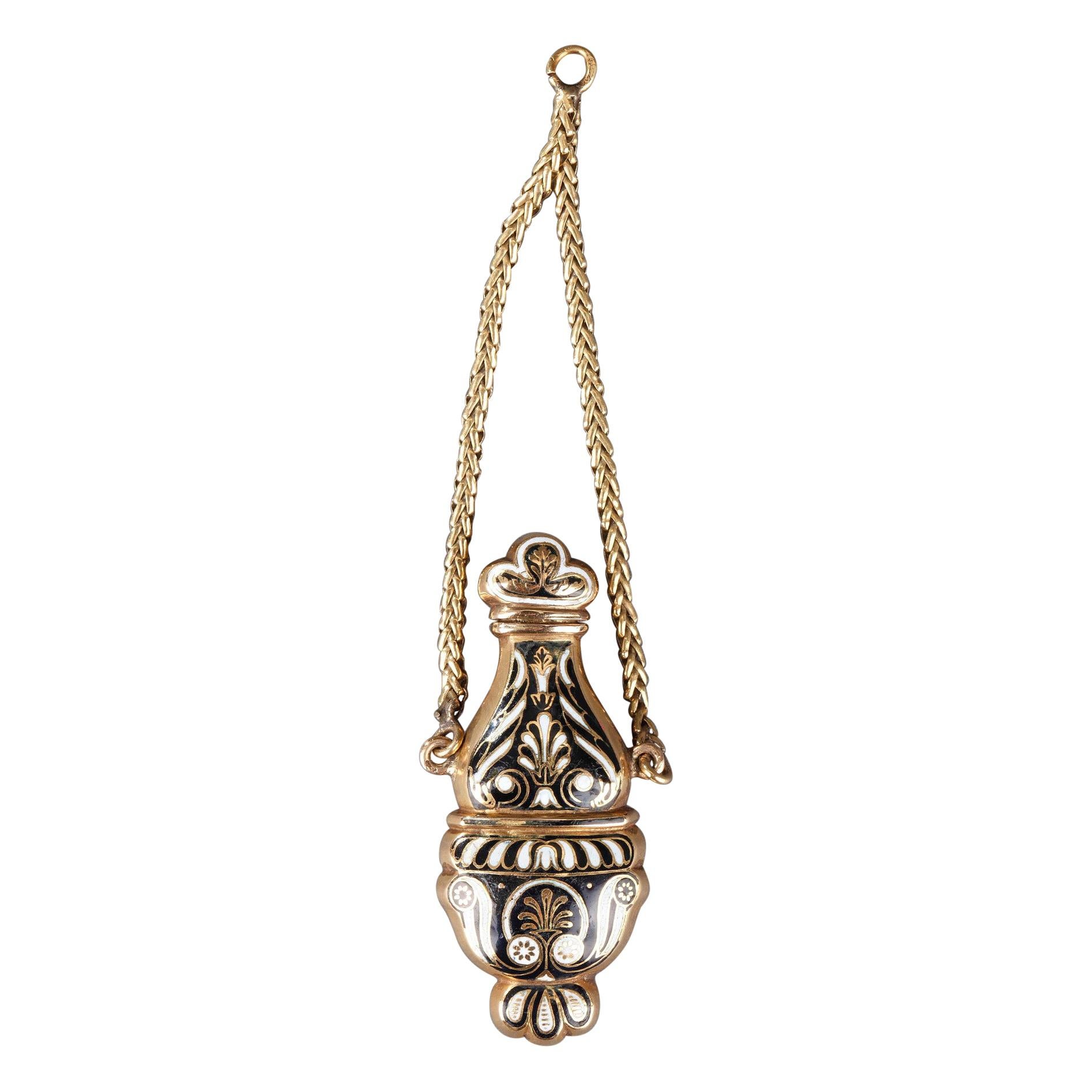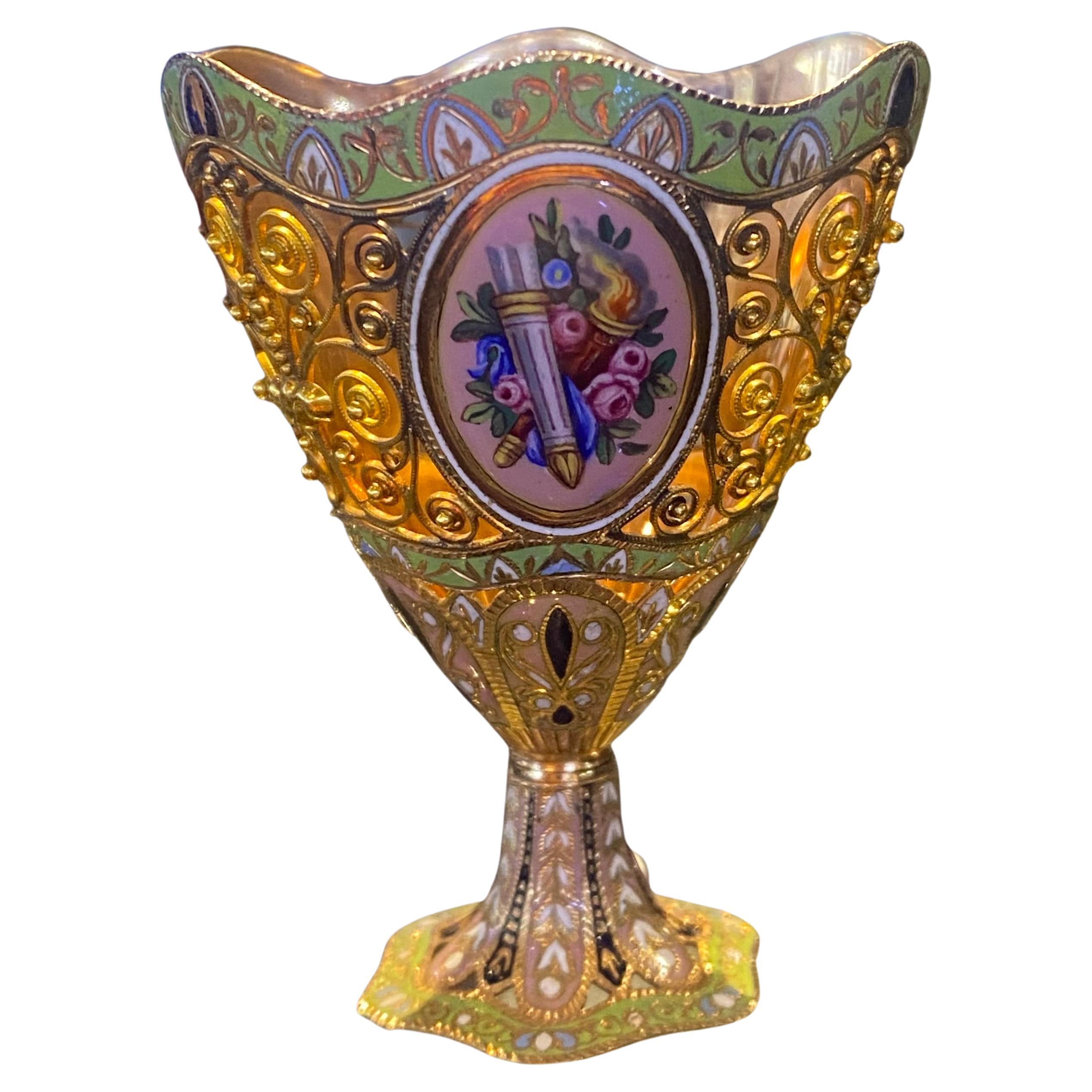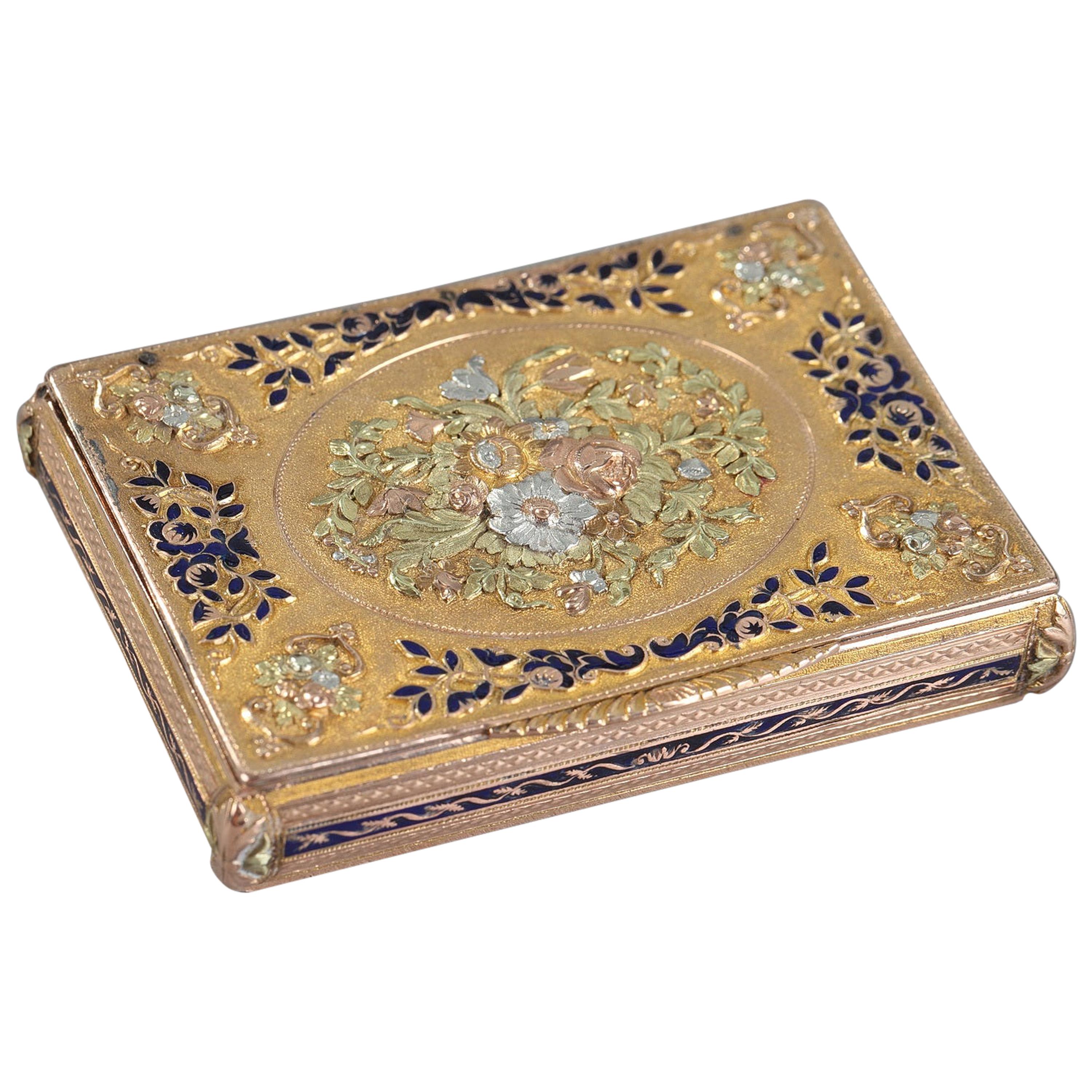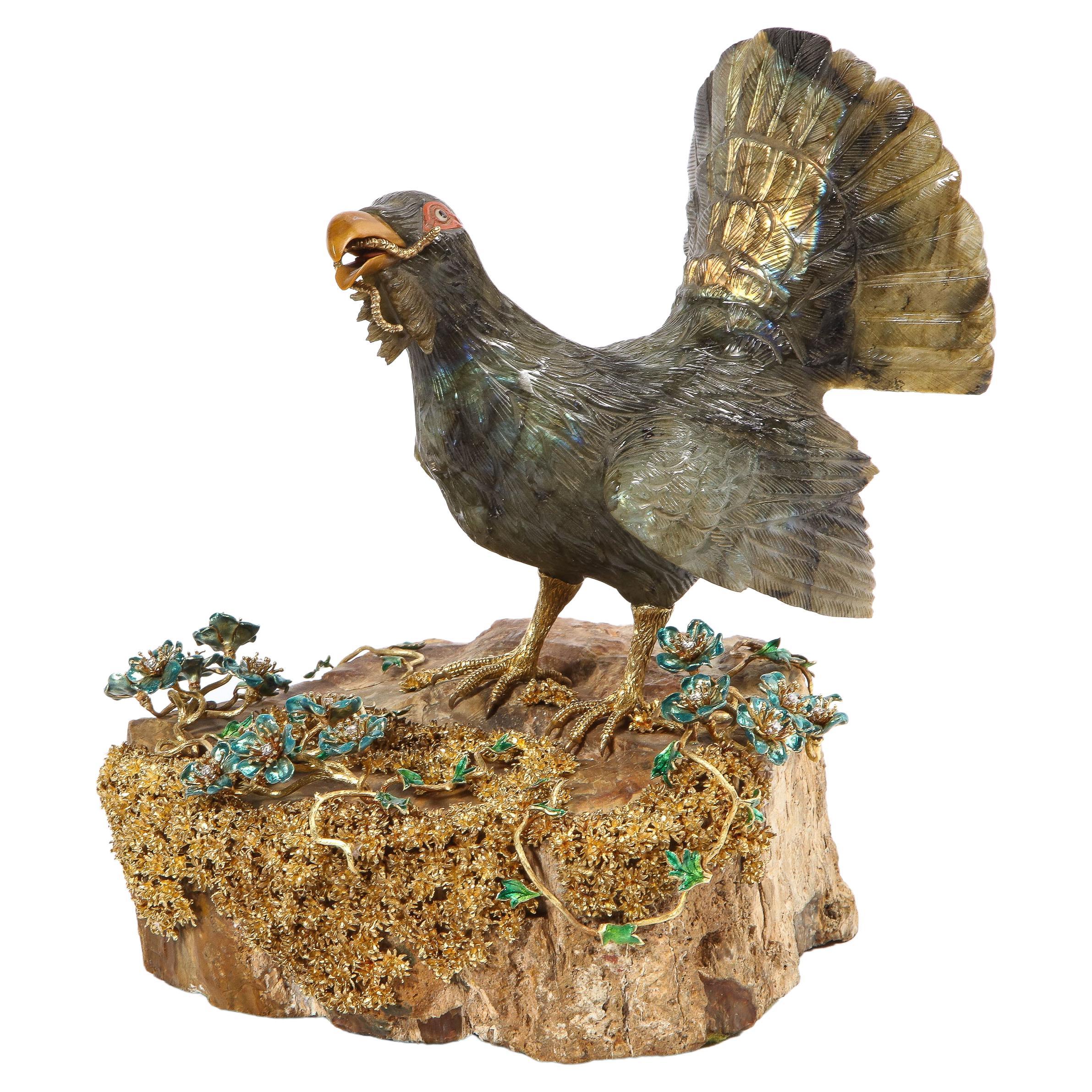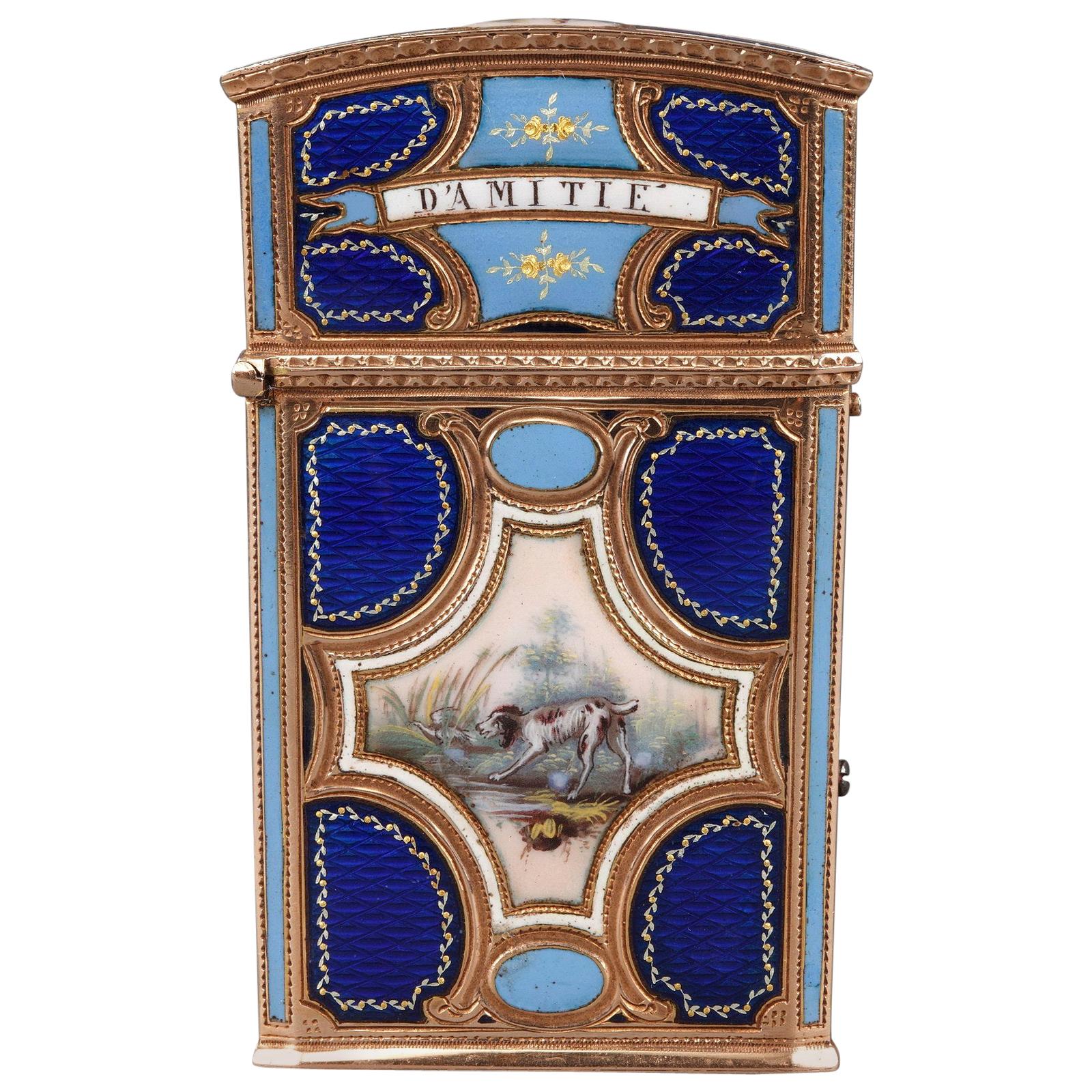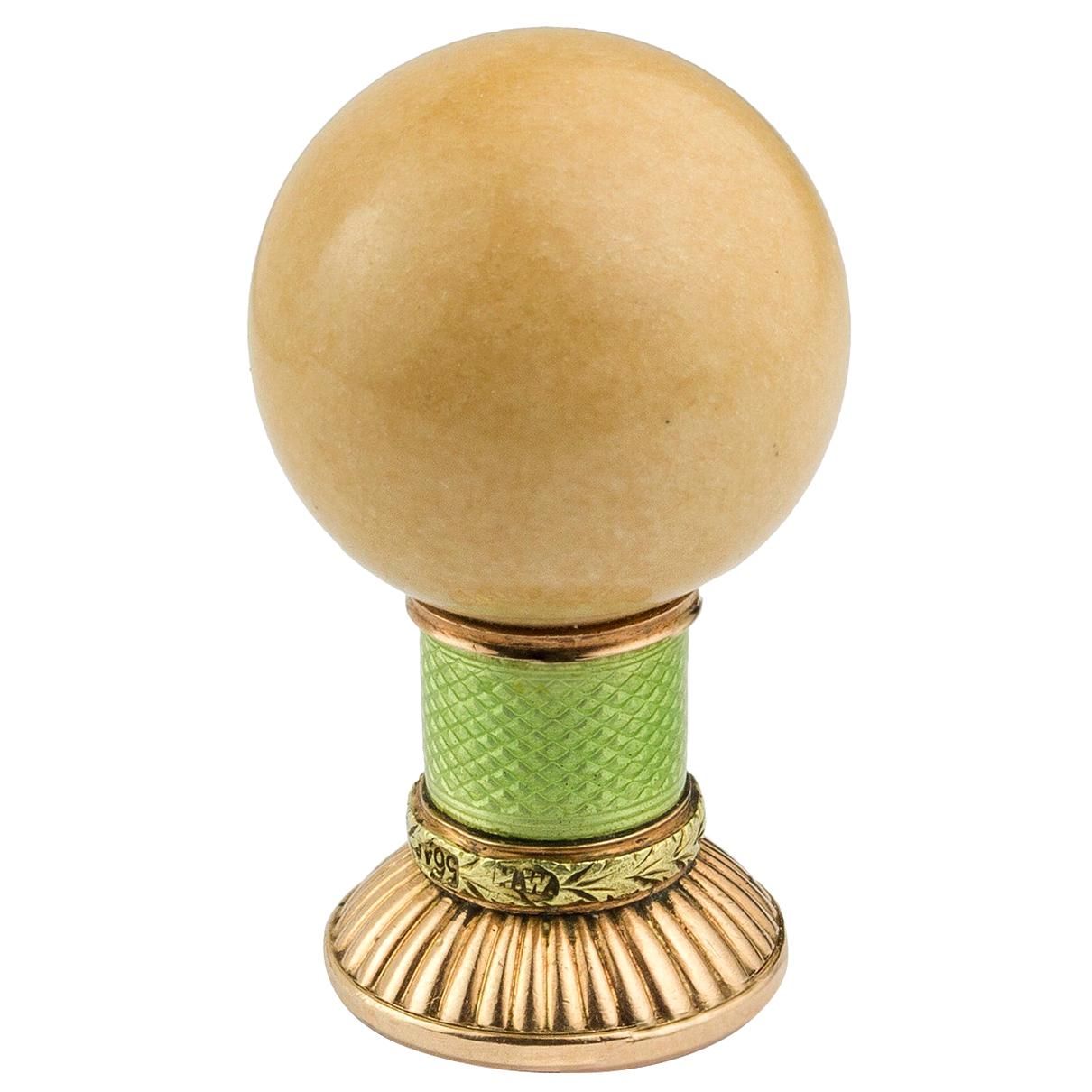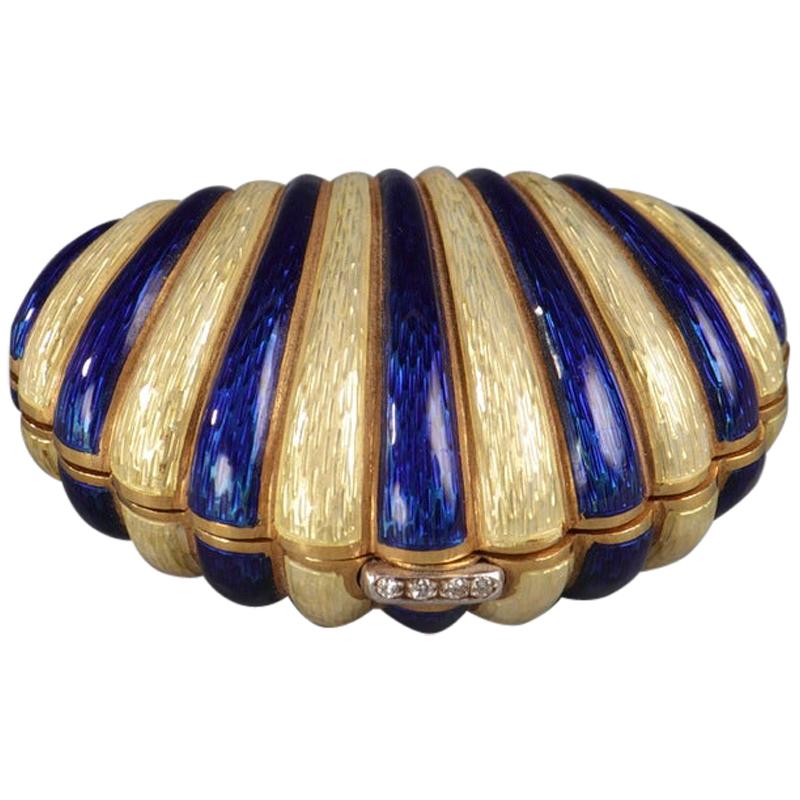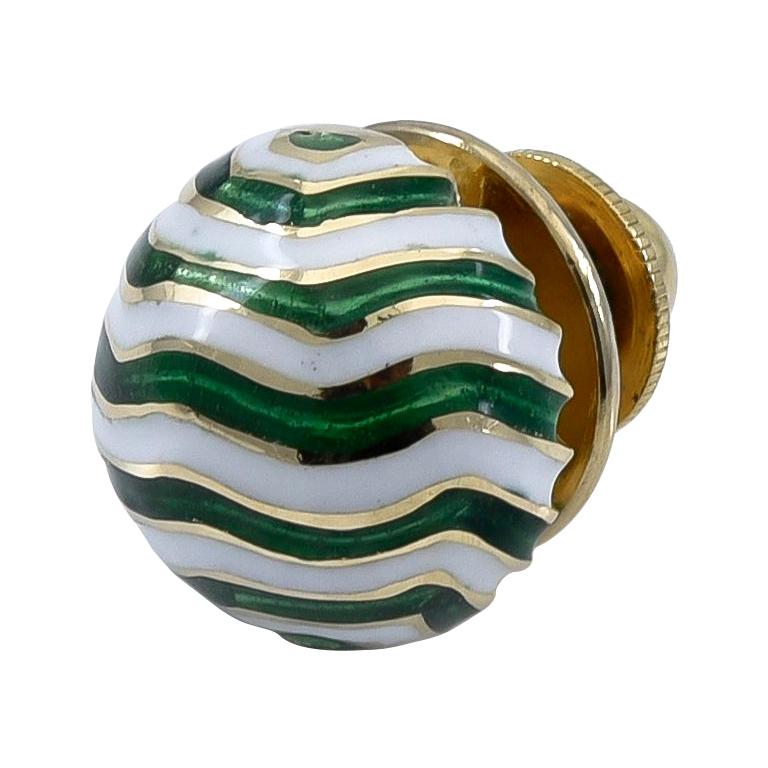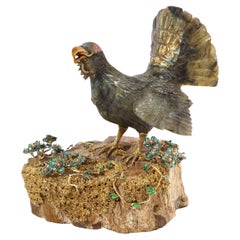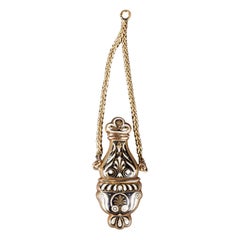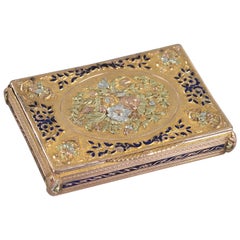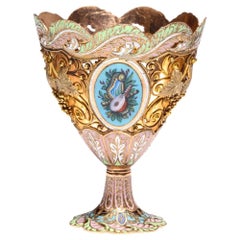
Swiss Gold and Enamel Zarf for the Turkish Market, circa 1840
View Similar Items
Want more images or videos?
Request additional images or videos from the seller
1 of 17
Swiss Gold and Enamel Zarf for the Turkish Market, circa 1840
About the Item
- Metal:
- Dimensions:Height: 2.5 in (63.5 mm)Diameter: 2 in (50.8 mm)
- Place of Origin:
- Period:
- Date of Manufacture:1840
- Condition:Wear consistent with age and use.
- Seller Location:New York, NY
- Reference Number:1stDibs: LU149427983122
About the Seller
No Reviews Yet
Vetted Seller
These experienced sellers undergo a comprehensive evaluation by our team of in-house experts.
Established in 1980
1stDibs seller since 2019
6 sales on 1stDibs
More From This SellerView All
- Rare 18K Gold, Enamel and Diamond Mounted Carved Labradorite Turkey BirdLocated in New York, NYA rare 18K gold, enamel and diamond mounted carved labradorite turkey bird sculpture on a petrified wood base, attributed to Manfred Wild, Idar-Oberstein, ...Category
20th Century German Figurines and Sculptures
MaterialsDiamond, Labradorite, 18k Gold, Enamel
- Rare Gold, Enamel and Jewelled Cutting ServiceLocated in New York, NYA Rare Gold, Enamel and Jewelled Cutting / Carving Service. The handles 18th century, Switzerland and the blades 19th century, England. Comprising a knife and a fork, the handles decorated with blue, green and white gold enamel panels of flowers...Category
Antique 18th Century Swiss Flatware and Serving Pieces
MaterialsGold, Enamel
- Rare English Silver-Gilt Book-Form Chess and Backgammon Game Board, circa 1976Located in New York, NYRare English silver-gilt book-form chess and backgammon game board, circa 1976. This exceptional and rare solid silver chess board converts into a backgammon board and can also be placed in a bookshelf to add more opulence. (3 in 1). This was most definitely a private commissioned piece by the House of Garrard...Category
20th Century British More Objets d'Art and Vertu
MaterialsSilver
- Contemporary Coral, 18k Gold, Diamonds, and Onyx PipeLocated in New York, NYA Contemporary Coral, 18K Gold, Diamonds, and Onyx Pipe. The carved coral pipe engraved with Chinese ornaments enhanced with brilliant-cut pave diam...Category
20th Century Chinese More Objets d'Art and Vertu
MaterialsCoral, Diamond, Onyx, 18k Gold
- 18K Gold, Diamonds, Amethyst, Tourmaline, Bloodstone, and Jasper Toucan BirdBy Gianfranco FrattiniLocated in New York, NYAn 18K gold, diamonds, amethyst, tourmaline, bloodstone, carved emerald, opal and jasper toucan bird resting on a gold tree branch, mounted on a carved malachite base. A very rare and unique gold-mounted jeweled object...Category
20th Century Italian Figurines and Sculptures
MaterialsAmethyst, Diamond, Tourmaline, Jasper, 18k Gold
- Mellerio Paris, a French Gold, Diamonds, Silver, and Smoky Quartz Carved HorseBy Mellerio dits MellerLocated in New York, NYMellerio Paris, A French Gold, Diamonds, Silver-Gilt, Rock-Crystal, Jade, Mother-Of-Pearl and Smoky Quartz, Carved Horse Sculpture, Jeweled Mounted Object. An extremely rare and unique, one of a kind French gold, diamonds, Silver-gilt, rock-crystal, jade, obsidian, mother-of-pearl, and smoky quartz carved jeweled sculpture "CHEVAUX DE LEGENDE", "A Legendary Horse" by Mellerio, Paris, circa 1991. Sitting on black obsidian base, the solid rock-crystal slab is finely applied with a carved smoky -quartz and jade horse with a harness mounted in 18k gold, brilliant -cut diamonds, rubies, turquoise, and amethyst chains and pendants. The top columns adorned with 18k gold and brilliant cut diamond pendants, the bottom with gold and mother of pearl plaques. The obsidian base with a plaque engraved: CHEVAUX DE LEGENDE" / N° 05 / MELLERIO DITS MELLER / PARIS / 5003 D The piece is in excellent condition and comes with a custom made wood case made for transport. It's very elegant and has French hallmarks throughout. A truly magnificent piece. Measures 10.5" high x 8.5" wide x 4" deep Founded in France in 1613 by the descendants of Italian immigrants from the Vigezzo Valley in the north of Italy, Mellerio is one of the oldest jewellery houses in Europe. The family business soon attracted the attention of the Royal Court and Marie Antoinette herself reportedly purchased a precious bracelet featuring 7 cameos surrounded by rubies in 1780. Later on, in the 19th century, Mellerio became the official supplier of the French Royal family and the Court of Netherland. Mellerio creates many jewellery items, all set with rare gems such as peridots, amethysts, aquamarines, citrines and topaz, applying for a patent, the flexible stem, a very supple and light jewellery mechanism. Mellerio remains also well known for their spectacular series of Art Nouveau jewels, created at the beginning of the 20th century, as well as for the creation of trophies rewarding some of the greatest footfall and tennis players of history. In 1993, the jewellery house launched their first watch collection. Today, Mellerio has stores in Paris, Japan and Hong Kong. July 14, 1789: this date is known throughout the world as the beginning of the French Revolution. According to a ledger belonging to House of Mellerio, this was also the day that the jeweler sold a golden key to the Comte de Coutance for 10 livres. This ledger, as well as inventories dating as far back as 1768, are the jeweler’s oldest archives. These archives have continued to grow over the years, as the House, established on rue de la Paix in Paris, still lives on today, still in the hands of the same family from Craveggia, in the North of Italy. The tumultuous history of the Mellerio family in France probably goes as far back as the Italian wars of the Renaissance, but the first official document proving their commercial activity in Paris dates back to 1613. This document is the famous royal warrant awarded by Marie de Medici to a number of Italian families established along the rue des Lombards, including the Mellerios, allowing them to sell “small jewelery items”, therefore granting them a small exception to the traditional monopoly enjoyed by Parisian jewelers. At that time, powerful corporations regulated the operations and customs of Parisian business, but thanks to this exceptional warrant, the Mellerios managed to escape the confines of this framework. Today, this wax-sealed document is kept at the city hall of Craveggia. From 1613 to the Revolution, the Mellerios lived between France and Italy. The corporations tried many times to put an end to their trade privileges, but all in vain, as a dynasty of sovereigns renewed the warrant. Always marrying and often retiring in Craveggia, the Mellerios continued to maintain their jewelry business in Paris. At first, they did this without a shop. Wearing backpacks (wooden boxes divided into small compartments where jewels were kept), they would tour town fairs around Paris and royal castles. This is how Jean-Baptiste Mellerio (1765-1850) is said to have sold a bracelet set with rubies and Antique cameos to Marie-Antoinette, which still exists today. Many elements seem to prove the veracity of this anecdote. The queen was particularly fond of cameos, which cover the entire background of her famous jewelry cabinet, and ruby was her favorite stone after diamond. The famous bracelet, reacquired a few years ago by the House of Mellerio, is indeed an 18th century jewel, set with antique cameos representing the profiles of Roman emperors. Two branches of the family were operating in Paris during this time, under the reign of Louis XVI: that of Jean-François (1746-1828), the paternal ancestor of the current Mellerios, and that of Jean-Baptiste (1765-1850). The French Revolution forced them to return to Italy. However, both Jean-Baptiste and François Mellerio (1772-1843), who was the son of Jean-François, were eventually able to return to Paris after the founding of the Consulate. Jean-Baptiste opened a shop at the Iron Crown of rue Vivienne, and François opened his at the Palais des Tuileries, rue du Coq Saint-Honoré. His well-organized order books give an idea of his high-ranking clientele during the “Old Regime”, among which were the Comte and Comtesse Octave de Segur, the Marquise (later Duchess) de Tourzel, former governess of the royal children, and her daughter, the Comtesse de Bearn, the Craufurds -who organized the flight to Varennes, the Duc and Duchess de Gramont, the Comtesse de Boigne, and Madame de Souza, Talleyrand’s mistress. We also see the names of the imperial family: Empress Josephine, the Queen of Holland, Princess Elisa, Caroline and Pauline. At that time, the House of Mellerio specialized, among other things, in the trade of antique cameos, a newly fashionable genre of jewel that captured the imagination of all the princesses and noble women of the time. The years of the Restauration and July Monarchy were among the most glorious. The Bourbons were back on the throne, and the clientele of the House of Mellerio had regained its former wealth. Mellerio supplied Louis-Philippe, Duke of Orléans, as well as his mother, wife and sister, with sumptuous jewels, including a set of emeralds made piece by piece, while the Duke of Bourbon, last prince of the House of Condé, offered diamonds to his mistress, the scheming Baronne de Feucheres, and Monsieur de LaFayette also bought cameos for one of his granddaughters. For the first time, Mellerio ventured into the world of arts in 1815, when Carlotta Grisi, a famous dancer who created Giselle, as well as an actress named Rachel, bought jewels at the Mellerio store on rue de la Paix. 1848 marked a new turning point. France once again became a Republic. François Mellerio handed the company over to his son, Jean, and the latter decided to travel to Spain to build a new clientele. He later became one of the jewelers of the royal family, and met Eugénie de Montijo, who remained a faithful client when she became empress of the French people. The Imperial years were lavish. During the Second Empire, Paris was a pageant of crinoline dresses designed by Worth, while jewels by Mellerio, Worth’s neighbour on the rue de la Paix, adorned the noble women of the Tuileries court. The Empress bought pearls. Mathilde Bonaparte...Category
20th Century French Figurines and Sculptures
MaterialsJade, Quartz, Rock Crystal, Ruby, Turquoise, Amethyst, Diamond, Gold, Si...
You May Also Like
- Gold and Enamel Perfum Bottle, Restauration Period, Circa 1830-1840Located in Paris, FRSmall perfum bottle in gold and enamel. The flask is decorated with palmettes and foliage motifs in white and black enamel on black enamel background. Two gold chains permitted the s...Category
Antique 1830s French Vanity Items
MaterialsGold, Enamel
- Enamel & Gold ZarfLocated in New York, NYMulti Color Enamel & Gold Zarf -A zarf is a small cup used for coffee designed to hold a small container inside in which to put the coffee. This zarf is designed with multi color e...Category
Antique 1850s Enamel Frames and Objects
MaterialsGold, Enamel
- Early 19th Century Gold and Enamel Box, Swiss WorkLocated in Paris, FRRectangular box with three tones of gold and royal blue enamel. The hinged lid is embellished with a multicolored gold medallion in relief featuring a bouquet of roses and tulips, se...Category
Antique Early 19th Century Swiss Empire Boxes and Cases
MaterialsGold, Enamel
- Enamelled gold Swiss box. Late 18th century.Located in Paris, FRRectangular enamelled gold box. The hinged lid is decorated with a scene of young people dressed in neoclassical clothing and approaching near an altar where officiates a person dres...Category
Antique 1780s Swiss Boxes and Cases
MaterialsGold, Enamel
- Gold, Enamel and Tablet CaseLocated in Paris, FRFlat trapezoidal shaped tablet case in enamelled gold. The upper part is hinged and opens with a push-button. The case is composed of four translucent blue...Category
Antique 1790s Swiss Desk Accessories
MaterialsGold, Enamel
- Fabergé Gold and Enamel Cigarette CaseBy FabergéLocated in Weston, MAThis bicolor gold and enamel cigarette case by Fabergé features an applied moss agate oval decoration set within a seed pearl and gold border. The body is decorated with yellow guilloche enamel and applied laurel bands at the base and cover. The case is finished with a cabochon sapphire thumbpiece. It is hallmarked Fabergé with makers mark for Henrik Wigström. Henrik Wigström (1862-1923) was one of the most important Fabergé work-masters. He joined the firm in 1884 as assistant to Michael Perchin and upon Perchin’s death in 1903 he became head work-master. The two were responsible for almost all of the Imperial Easter eggs produced by Fabergé, as well as superbly crafted enamel and gold objects...Category
Antique 1890s Russian Late Victorian Boxes and Cases
MaterialsPearl, Sapphire, Blue Sapphire, Agate, Enamel, Gold, White Gold, 18k Gol...
Recently Viewed
View AllMore Ways To Browse
Antique Turkish Vases
Blue Turkish Vase
Antique Ottoman Turkish Silver
Antique Russian Silver Cup
Turkish Cup
Turkish Coffee Silver
Ottoman Turkish Jewelry
Antique Ottoman Jewelry
Russian Cup Handle
Ottoman Antique Jewelry
Russian Enamel Cup
Turkish Coffee Cup
Russian Silver Enamel Cup
Antique Zarf
Swiss Enamel Zarf
Enamel Zarf
Ottoman Zarf
Used Clusters
